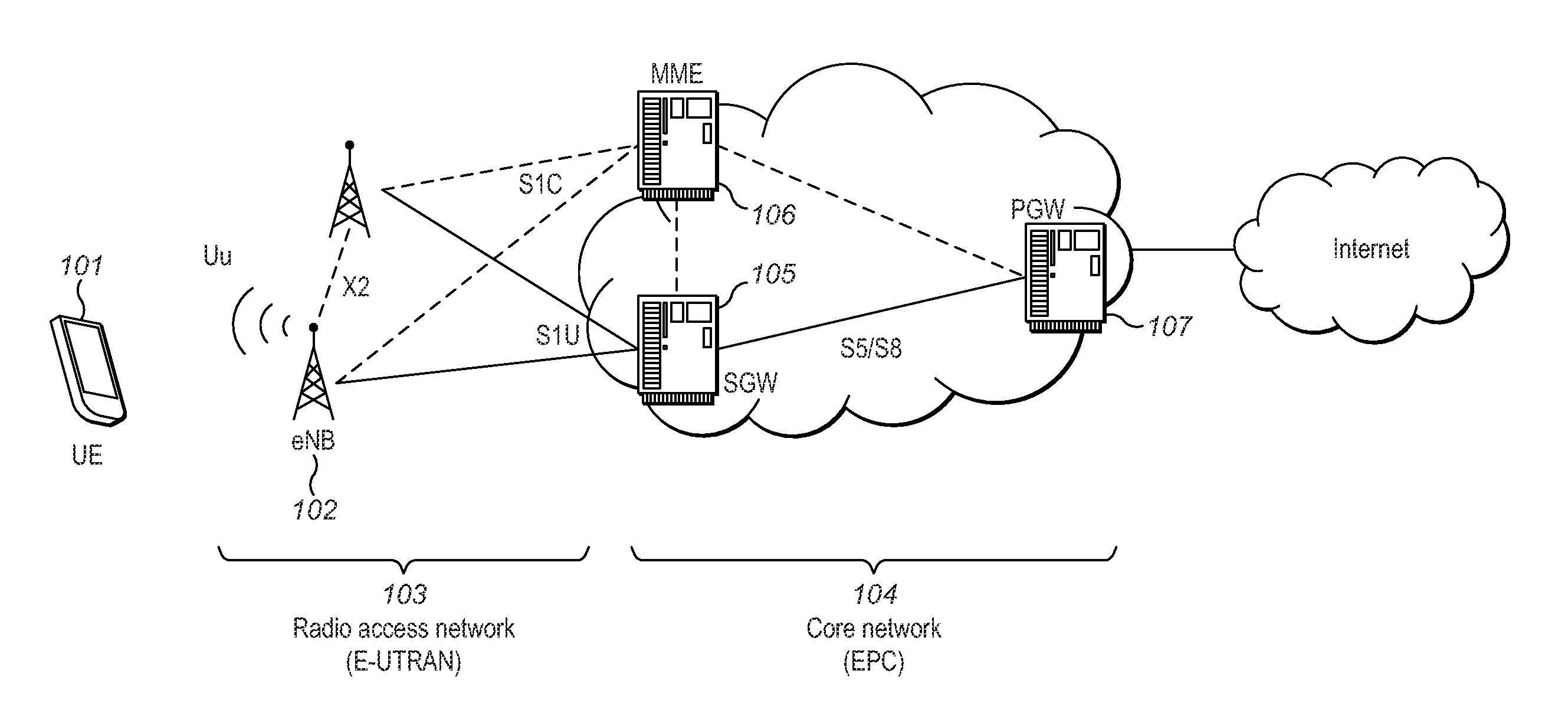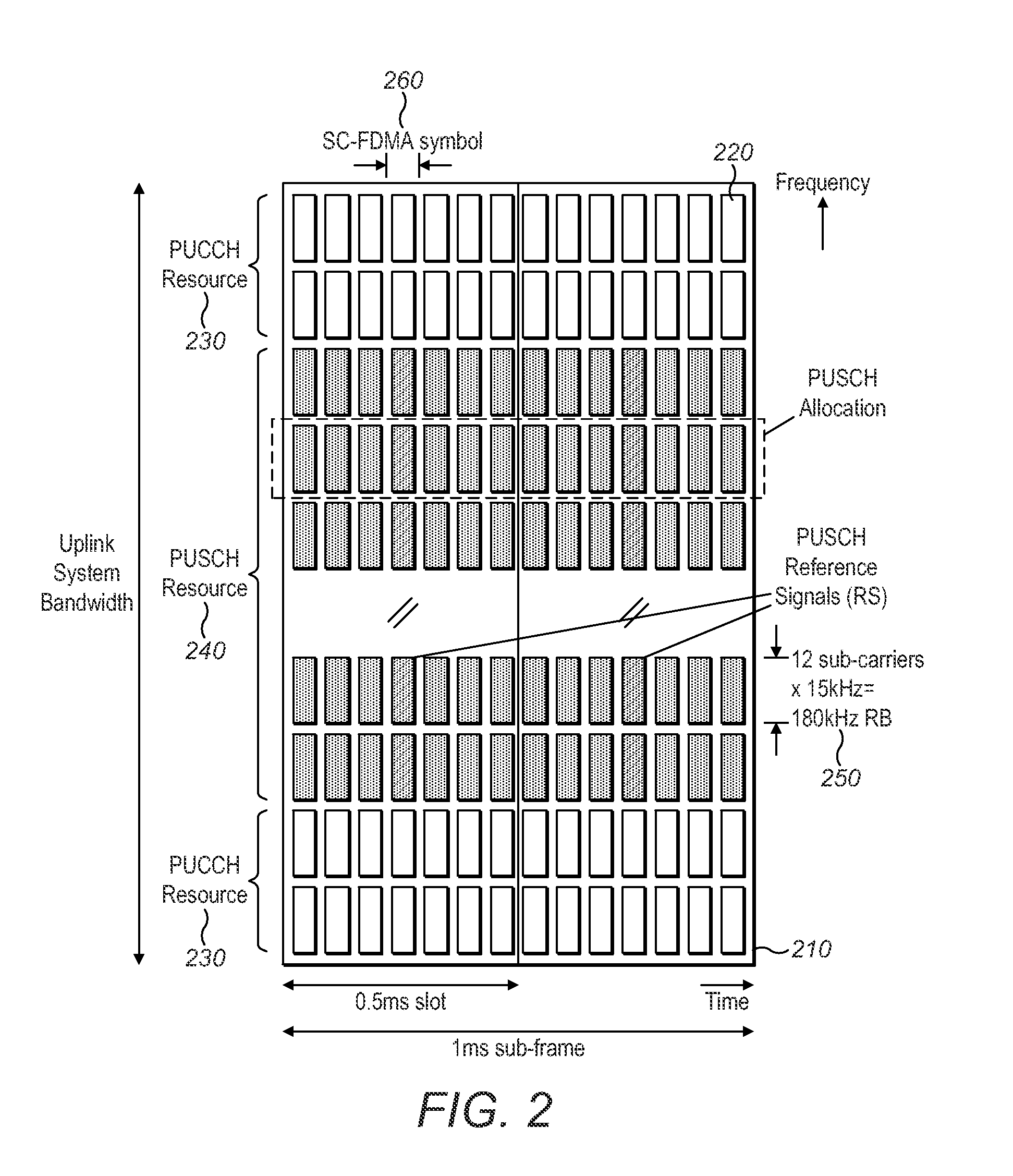Method Implemented in an eNodeB Base Station
a technology of enodeb base station and scheduling request, applied in the field of sending and receiving scheduling request, can solve the problems of inability to cope with the changing behaviour and requirements of modern mobile devices, inability to scale well, and infinite amount of bandwidth available over the air
- Summary
- Abstract
- Description
- Claims
- Application Information
AI Technical Summary
Benefits of technology
Problems solved by technology
Method used
Image
Examples
Embodiment Construction
PUCCH
[0073]In certain embodiments, a common or shared SR resource (CSR-resource) is assigned to a plurality of users for the purposes of sending scheduling requests that contain a user ID or part thereof. The CSR resource may reuse existing physical layer control channel (PUCCH) formats for the revised purpose of sending the SR containing the ID or part thereof. The reuse of existing LTE PUCCH format types (not originally designed for contention-based SR purposes) to carry the user ID reduces the need for physical layer redesign and enables the scheme to be used on existing or legacy hardware or firmware implementations. The scheme may use PUCCH formats capable of carrying more bits than the current PUCCH formats 1 / 1a / 1b in order to allow a large number of users to share the same PUCCH resource.
[0074]Certain embodiments comprise explicitly sending a user ID (or portion thereof) to the eNB within a PUCCH signal construction (e.g. PUCCH format 2 or PUCCH format 3) during the access at...
PUM
 Login to View More
Login to View More Abstract
Description
Claims
Application Information
 Login to View More
Login to View More - R&D
- Intellectual Property
- Life Sciences
- Materials
- Tech Scout
- Unparalleled Data Quality
- Higher Quality Content
- 60% Fewer Hallucinations
Browse by: Latest US Patents, China's latest patents, Technical Efficacy Thesaurus, Application Domain, Technology Topic, Popular Technical Reports.
© 2025 PatSnap. All rights reserved.Legal|Privacy policy|Modern Slavery Act Transparency Statement|Sitemap|About US| Contact US: help@patsnap.com



